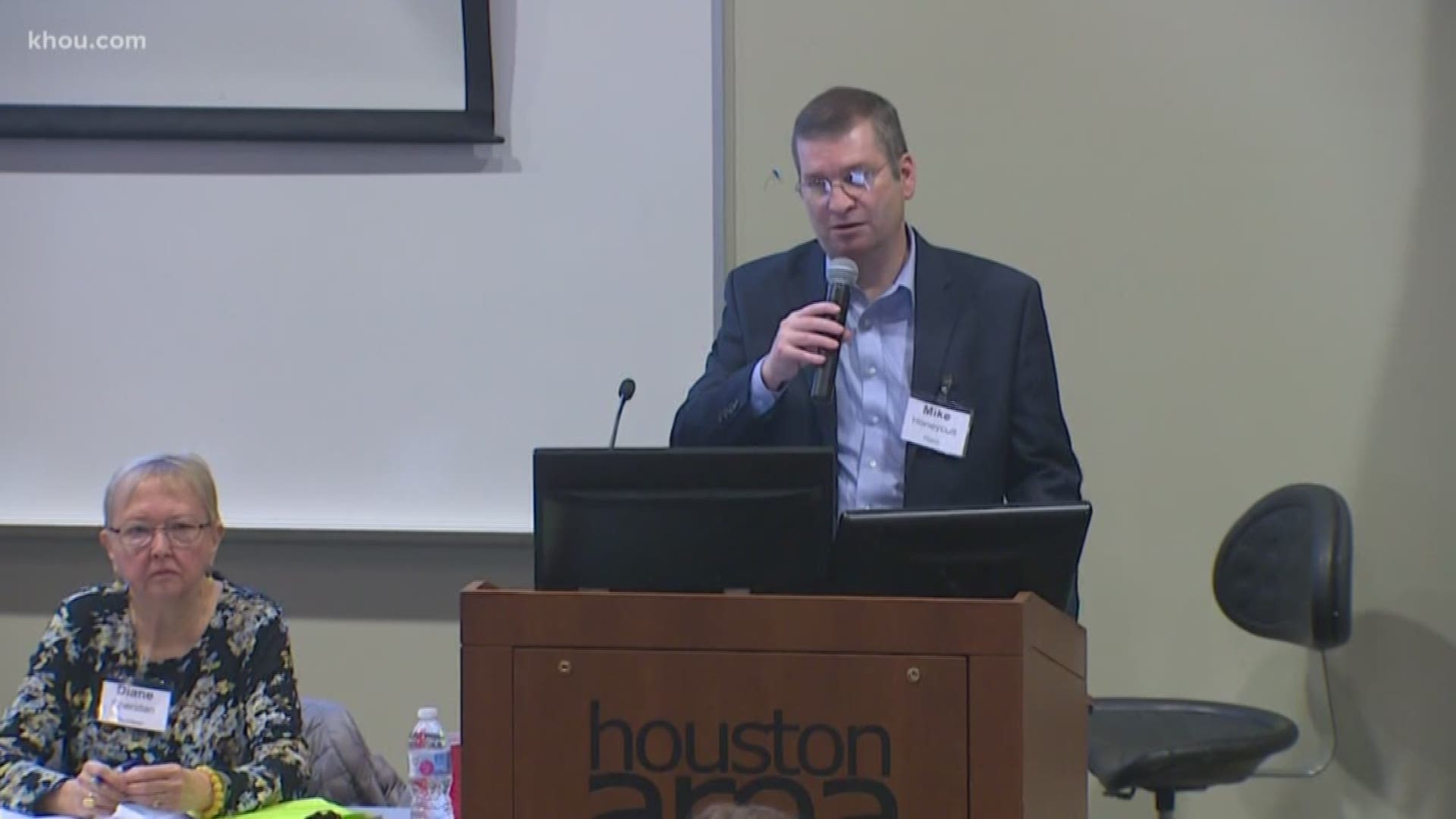HOUSTON — An investigation by the Los Angeles Times says after Hurricane Harvey, NASA tried to fly a pollution-spotting plane over Houston, and the Environmental Protection Agency said no.
The newspaper investigation claims the state and EPA kept the space agency out of Houston despite NASA’s ability to provide the world’s most sophisticated air samples.
LA Times investigative reporter Susanne Rust sent a freedom of information request to NASA after a colleague got a tip about the failed flight. When the request came back, the LA Times reviewed the emails showing NASA’s request to fly and how the state and EPA responded.
NASA scientists wanted to fly their DC-8 plane equipped with the world’s most sophisticated air samplers over Houston after Harvey. The plane was already equipped with the proper technology in preparation for a separate mission.
“They were like, 'Hey, why don’t we sent this over?'” Rust said. “We’ve got this really amazing equipment here. We could be adding a lot to the government’s knowledge and the people’s knowledge of what’s happening.”
The Times reports NASA’s mission never got off the ground. They said the State of Texas and the EPA told scientists to stay away.
“They were concerned that anything NASA might come back with could be confusing or possibly conflicting with their data,” Rust said.
State officials responded Tuesday evening to the report. KHOU 11 News asked the man who turned down NASA's offer, why not use their help?
"I didn't tell them not to fly, they called and asked, could you use this data and I said no," said Michael Honeycutt, Director of the Toxicology Division for Texas Commission on Environmental Quality.
Speaking at a community meeting in Pasadena Tuesday night, we caught up with Honeycutt. He defended his department's air quality monitoring after Hurricane Harvey.
"There was a national outpouring for the people of Houston, people were calling, what can we do to help and NASA did the same thing," he said.
However, in the Times article, the State of Texas and EPA are criticized for not taking the space agency's offer.
"It's shocking, it's disappointing," said Elena Craft with the Environmental Defense Fund.
Craft said why not use NASA's state of the art technology to get more data?
"I'm heartbroken that as a nonprofit, we scrape together money ourselves to bring monitoring equipment to Houston post Harvey," she said.
Craft worries what we might have missed that could have a long-term impact on the health of Houstonians.
"There were threats and risks to the community that were never characterized by EPA nor TCEQ," Craft said.
However, Honeycutt claims the state was getting good data and NASA's offer was too far above what they really need.
"At that point in time people were asking is it safe air to breathe and we needed the data at ground level, at 5 feet high not 30,000 feet in the air," he said.
EPA spokesman John Konkus called the article inaccurate and told KHOU 11 News, “the state asked for EPA to assist with air quality monitoring following Hurricane Harvey by deploying our own Trace Atmospheric Gas Analyzer (TAGA), our Portable High-Throughput Integrated Laboratory System (PHILIS), and our own Airborne Spectral Photometric Environmental Collection Technology (ASPECT) aircraft.”
ASPECT flew 28 missions in 13 days. Konkus said it provided more than 100 hours of chemical screening, thermal imagery and aerial imagery data from 134 Risk Management Plan facilities, 456 drinking water plants and 105 wastewater facilities impacted by Hurricane Harvey.
However, scientists familiar with NASA’s DC-8 technology call their airborne air quality lab the most precise and comprehensive on the planet. The LA Times reports “the EPA’s air pollution single-prop plane can gather some basic chemistry of about two dozen species of air-pollutant compounds. The NASA just can analyze more than 405."
Emails uncovered by Rust include Texas’ Director of Toxicology Michael Honeycutt telling NASA officials, “at this time, we don’t think your data would be useful.”
EPA spokesman David Gray said, “EPA concurs with your assessment and we will not plan to ask NASA to conduct this mission.”
“It was clear on NASA’s side these two had the authority to decide yes or no as to whether they came in,” Rust said. “(NASA) decided they wouldn’t batter that political pressure and decided not to come.”
In a reply to KHOU 11’s inquiry, Konkus said they’ve asked the LA Times to correct the article’s title that currently reads, “Post-Hurricane Harvey, NASA tried to fly a pollution-spotting plane over Houston. The EPA said no.”
Konkus told KHOU, “EPA did not decline NASA’s offer to fly its plane over the Houston area after Hurricane Harvey.”
ALSO POPULAR ON KHOU.COM

